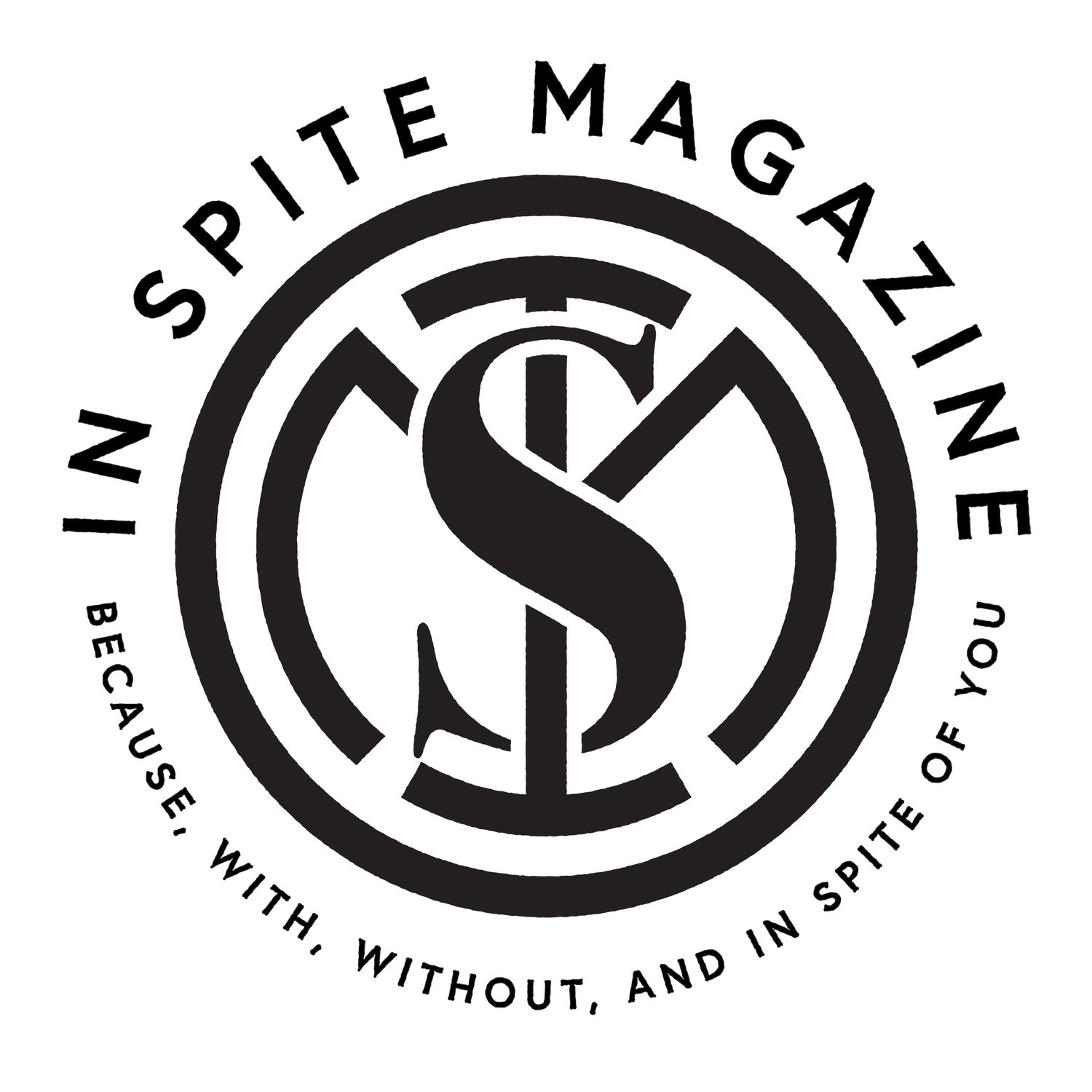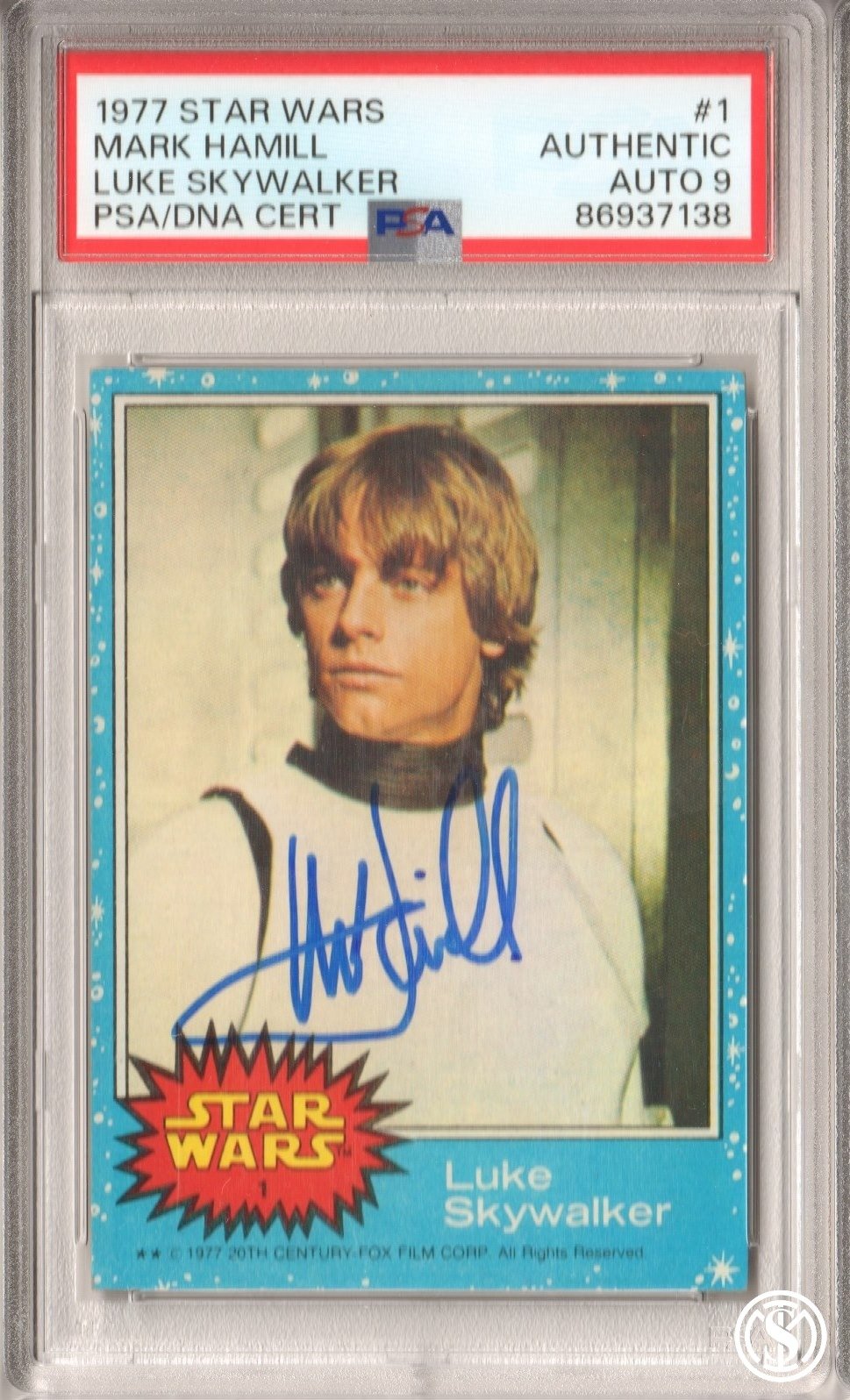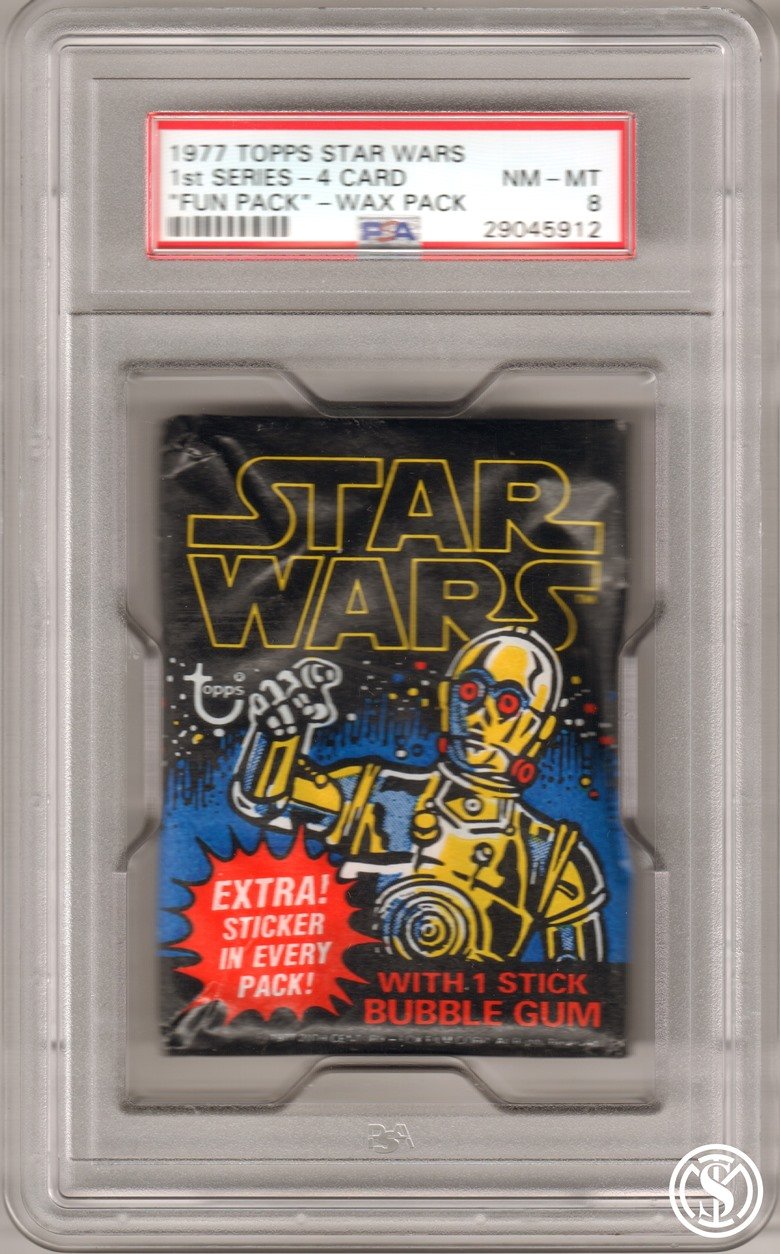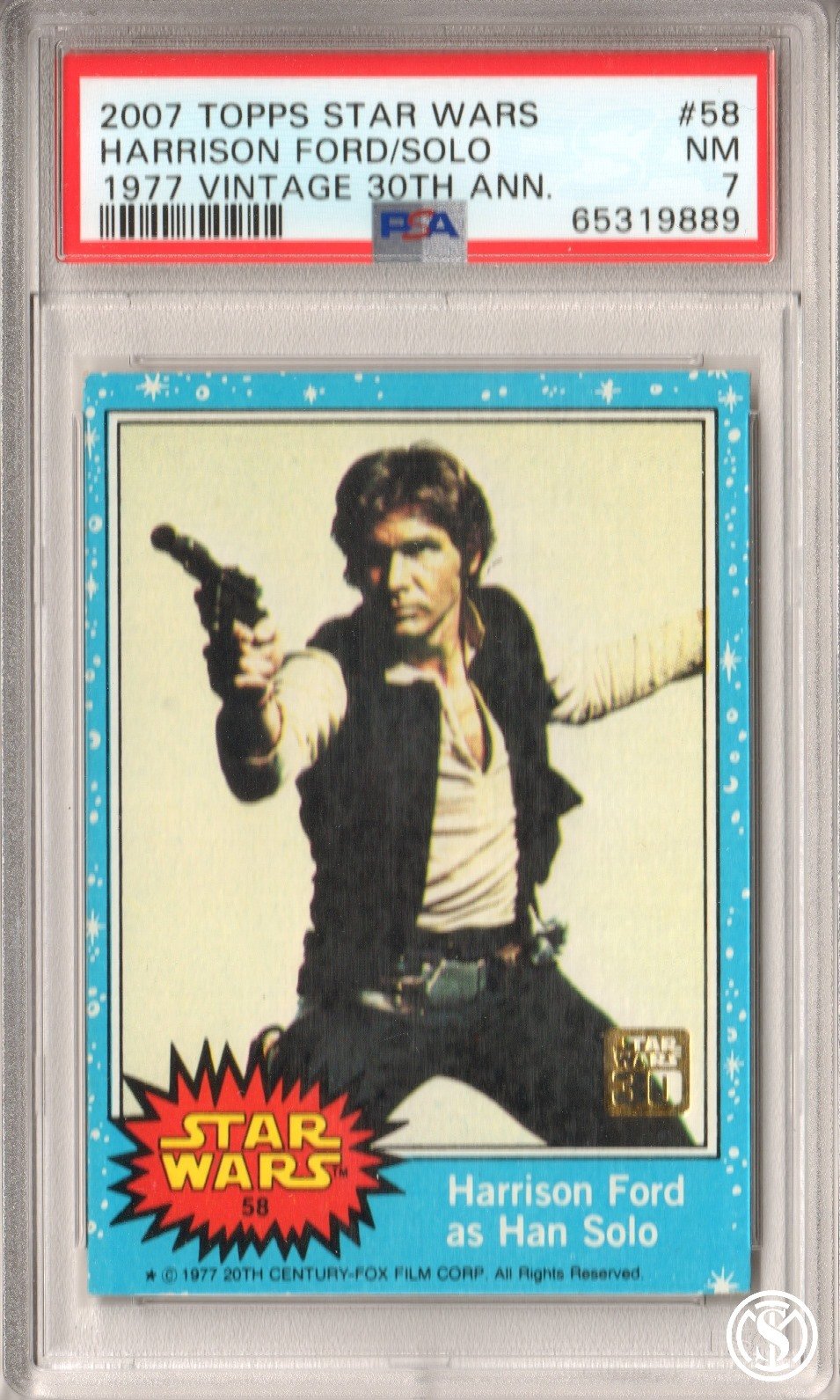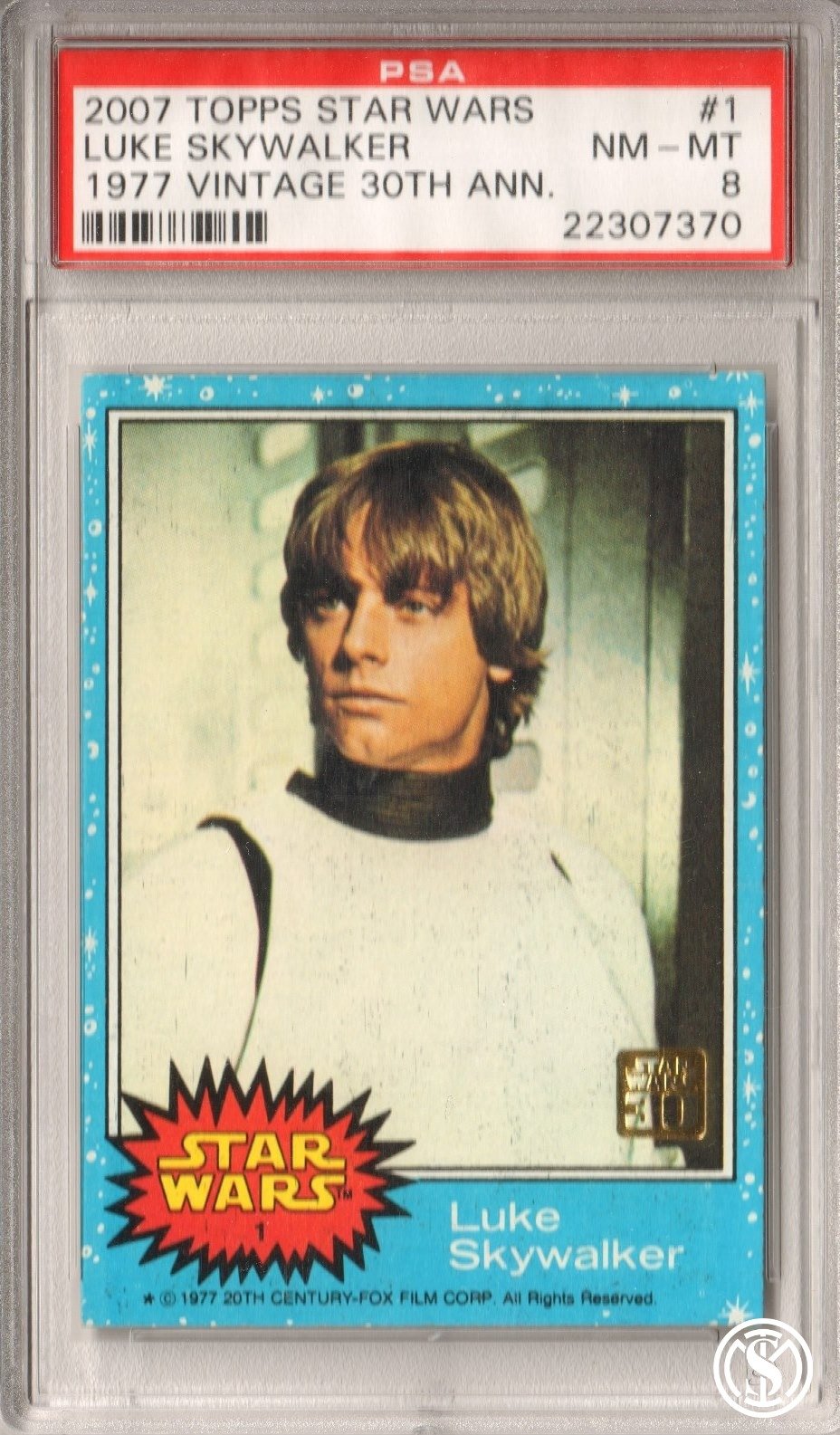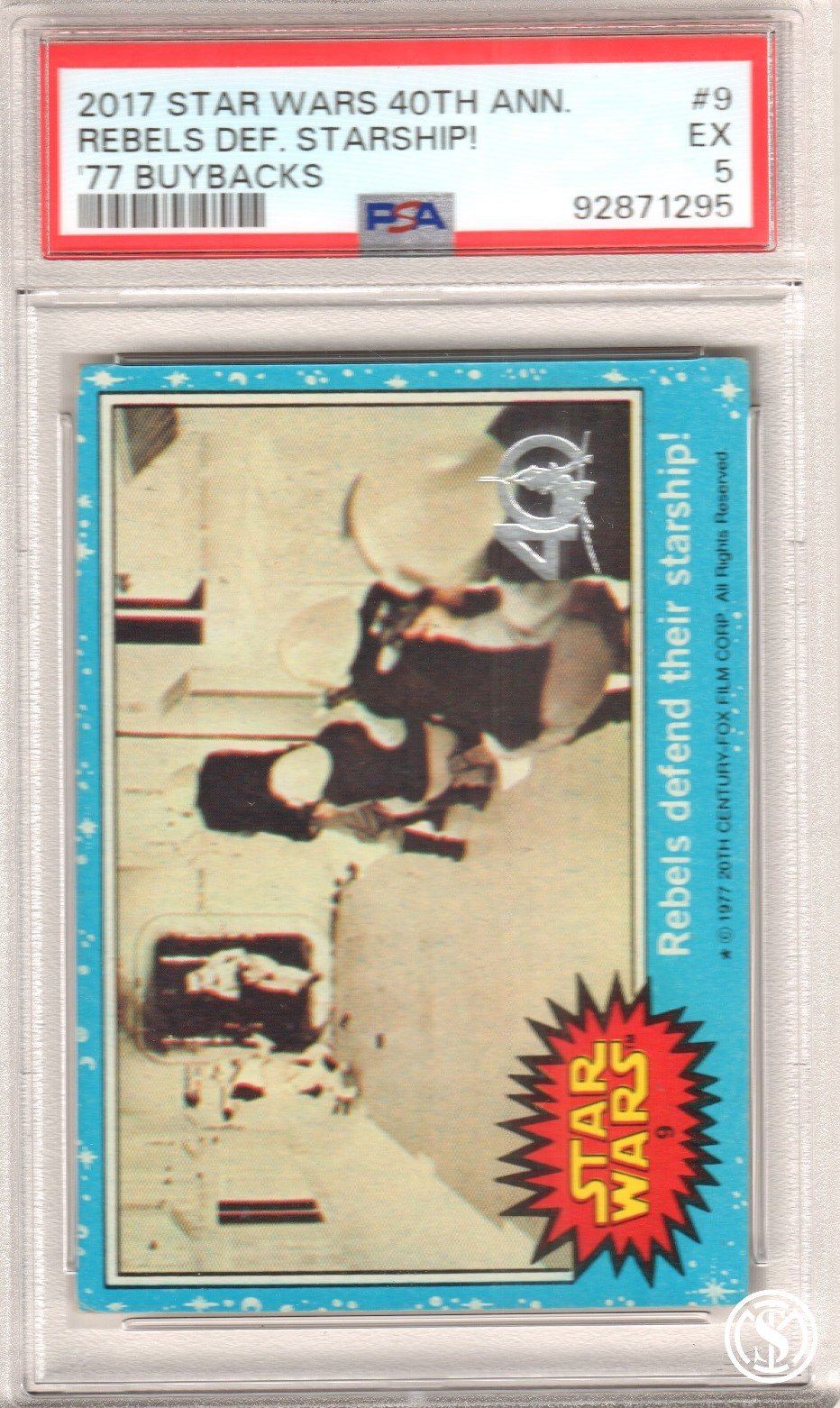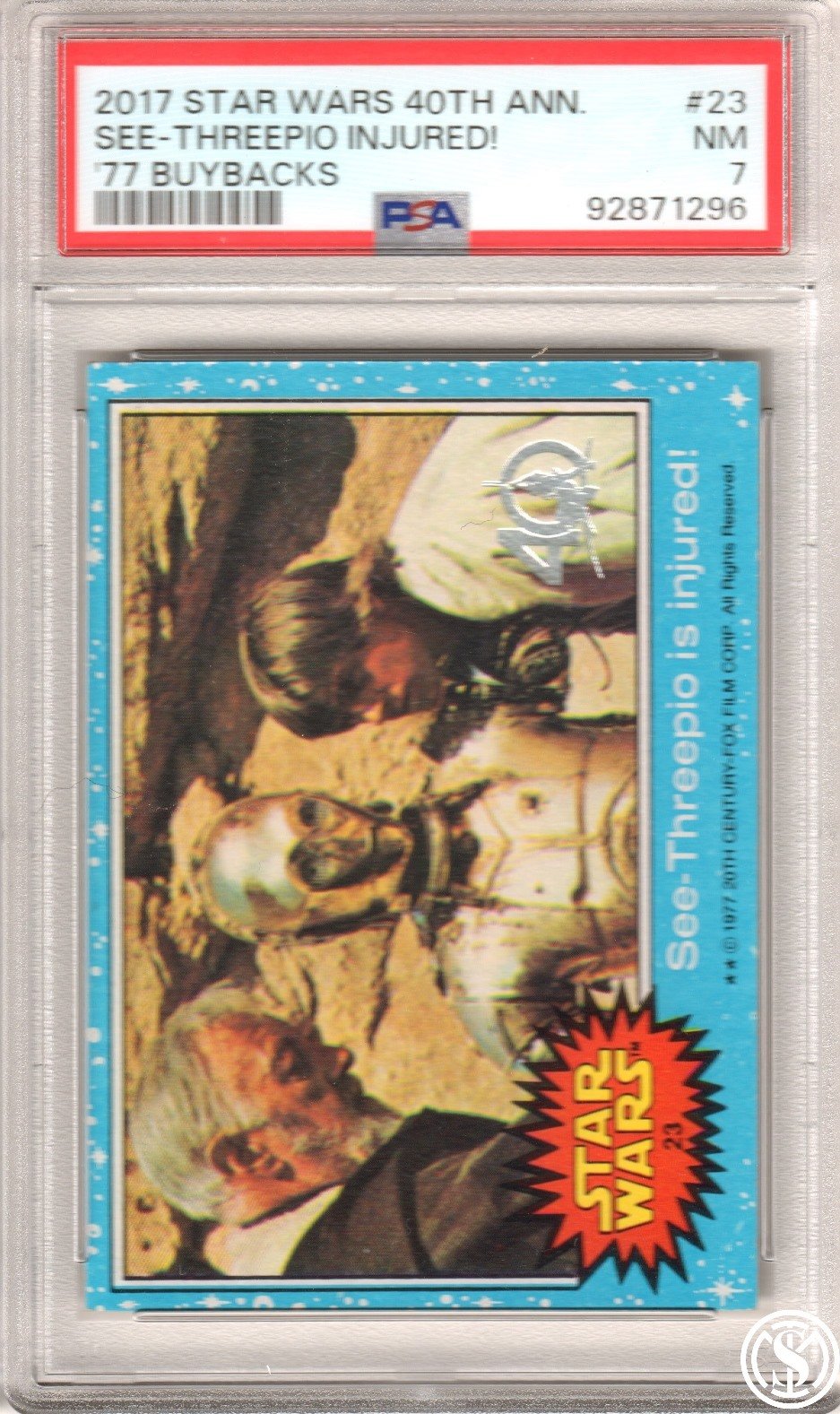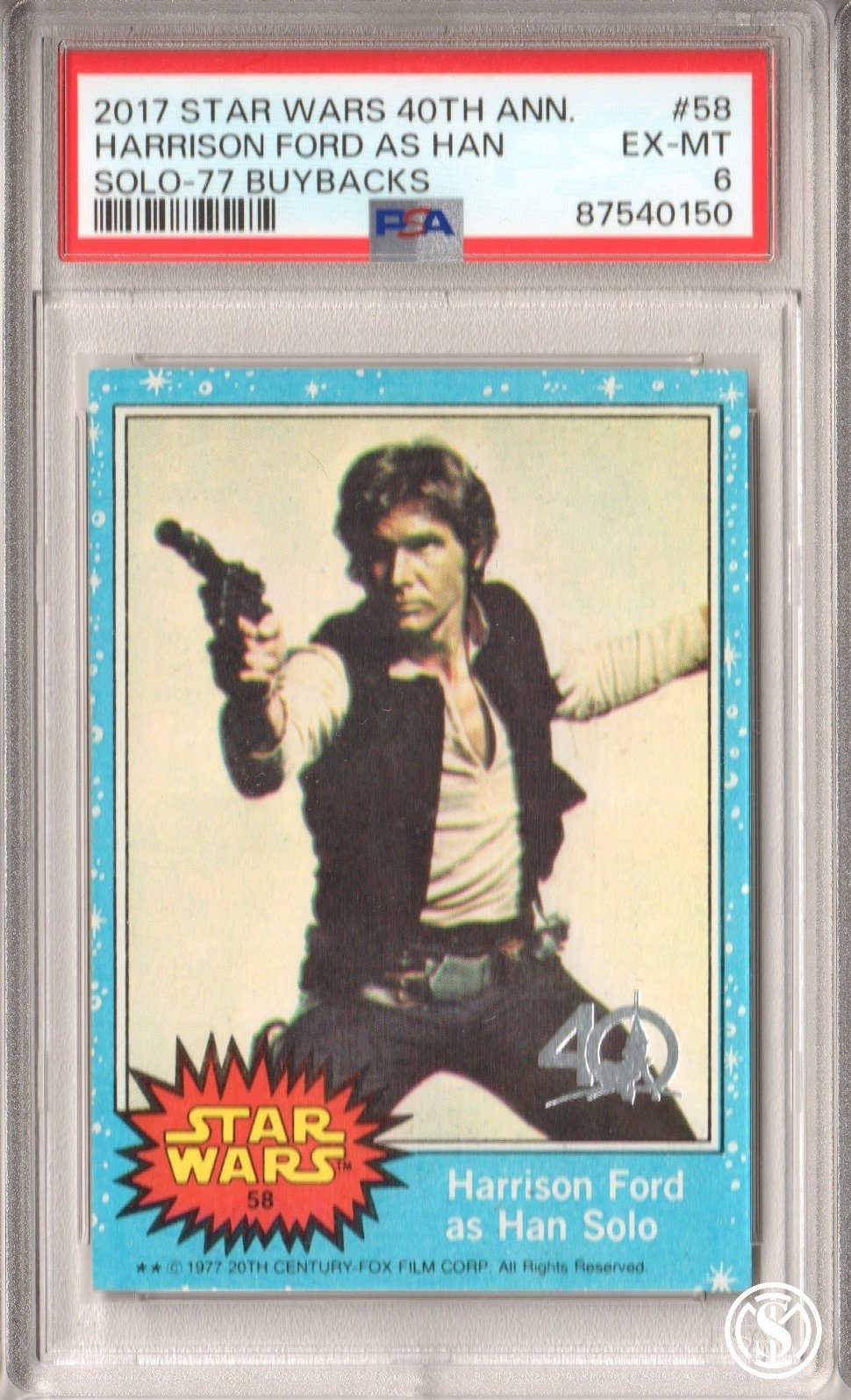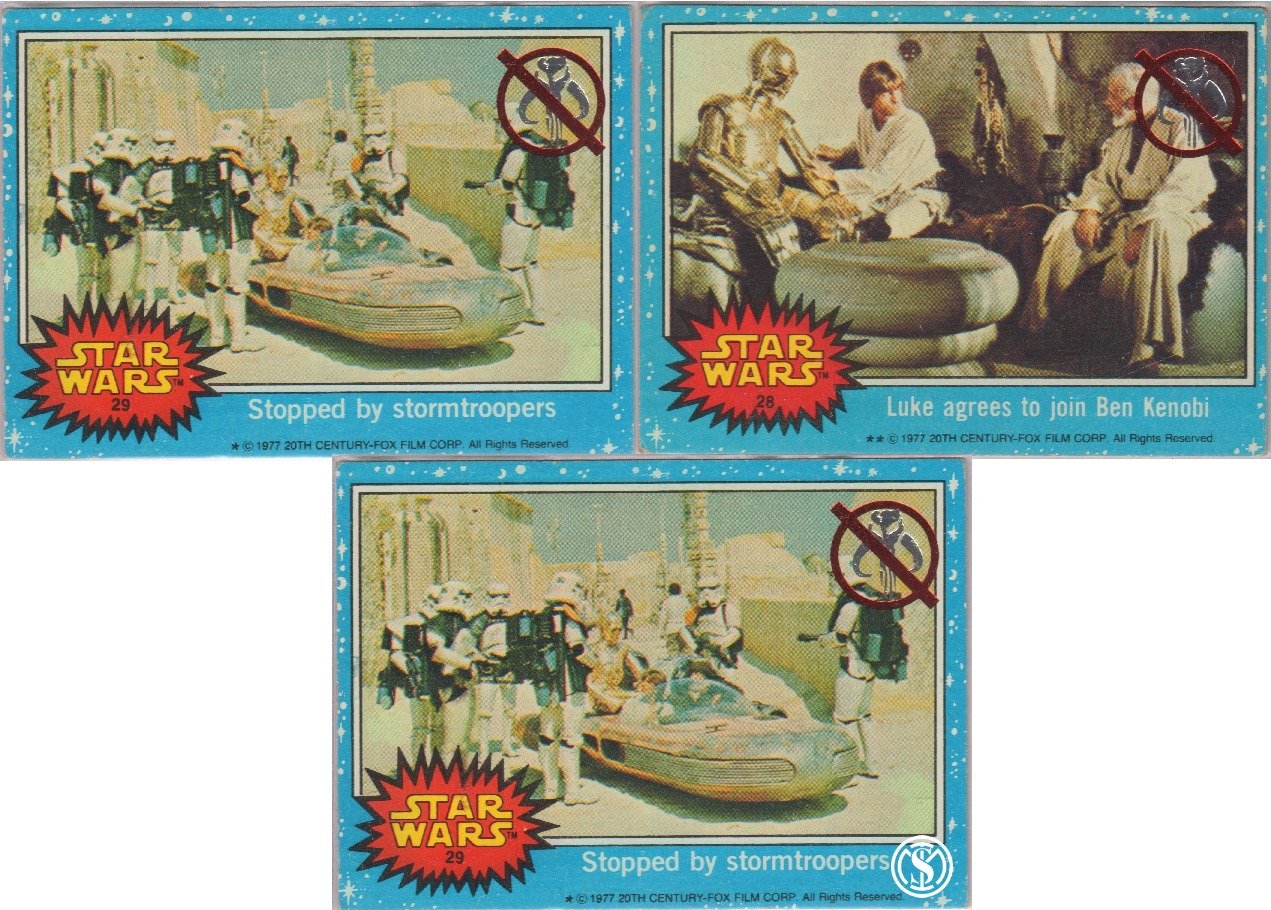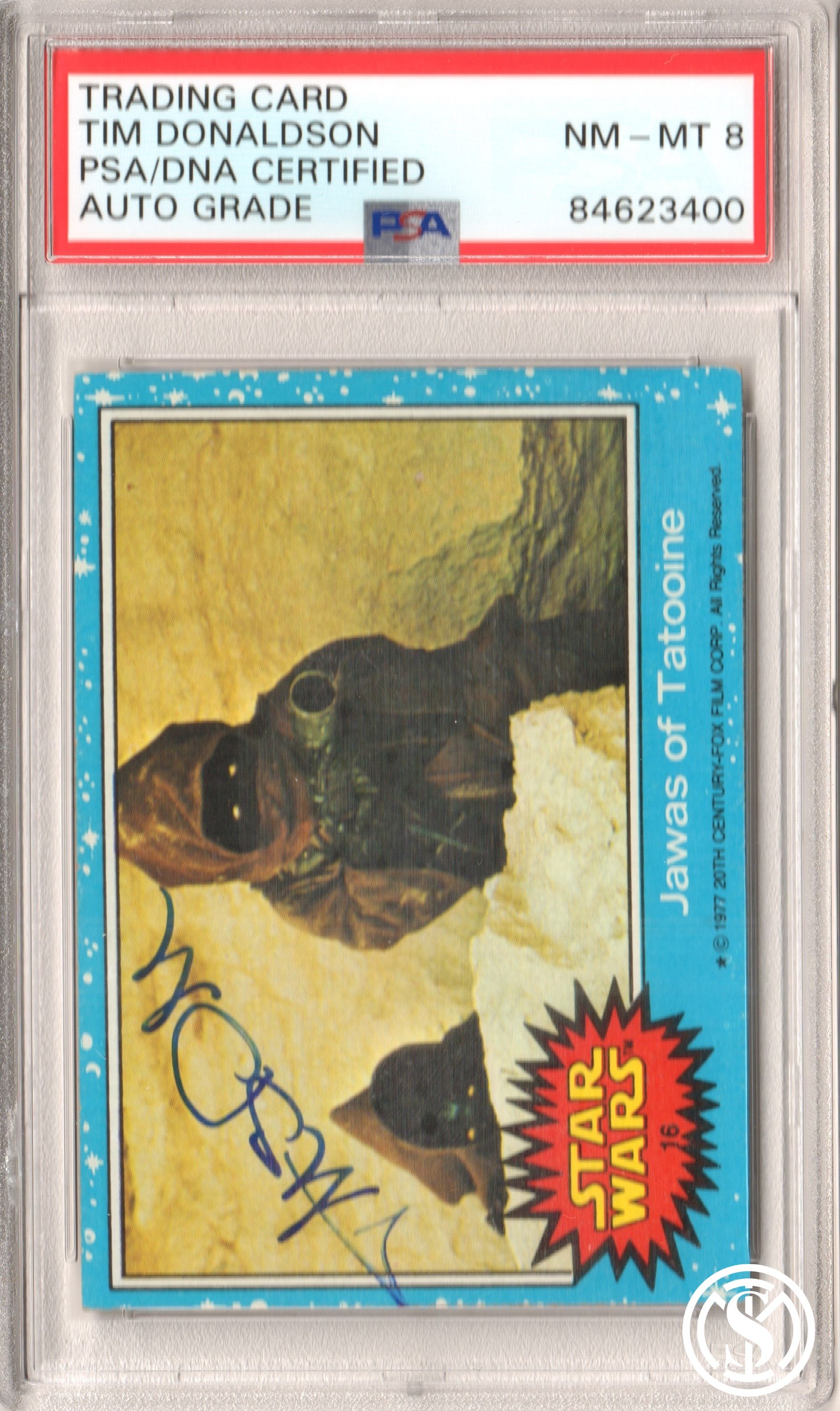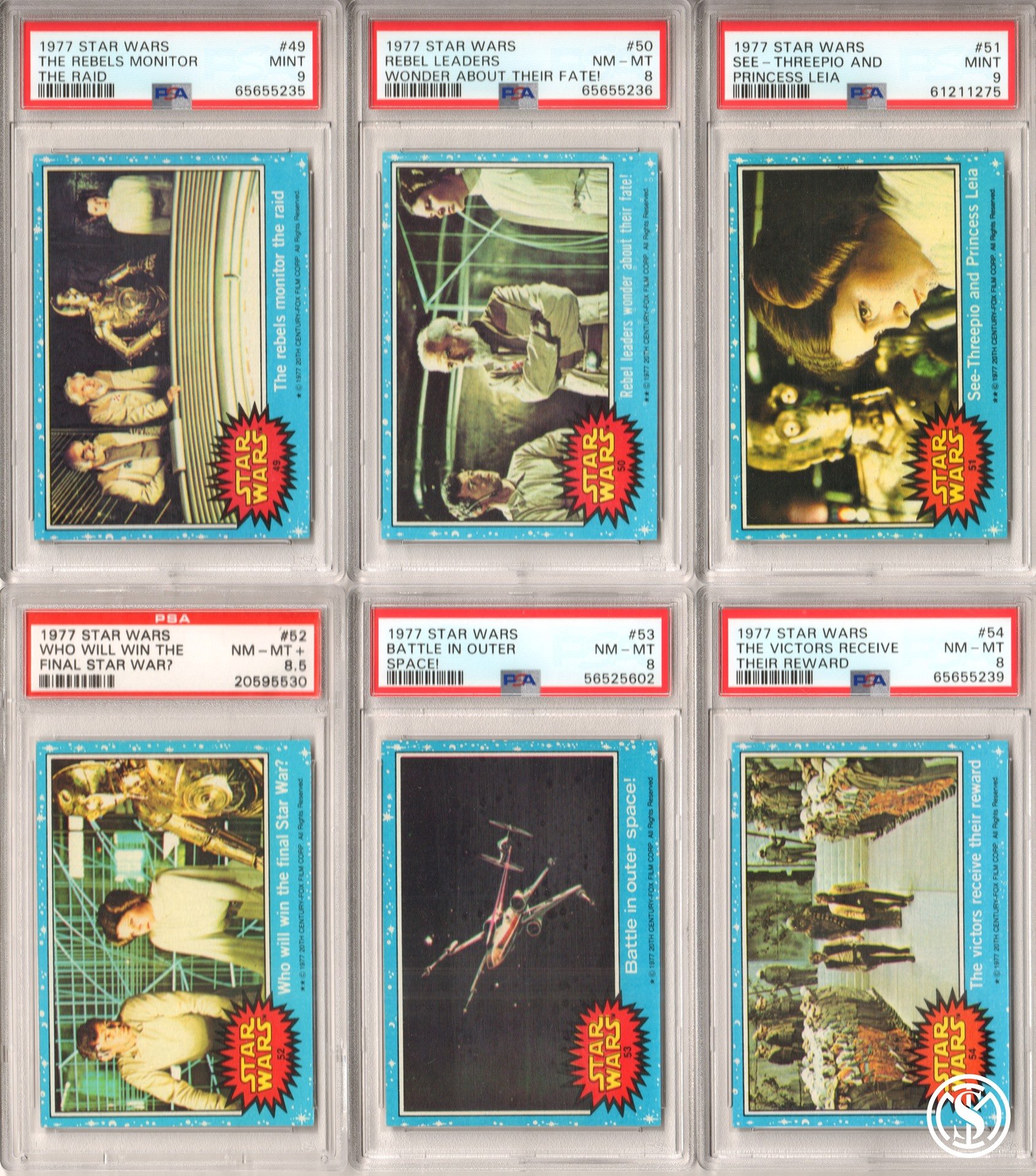Star Wars Trading Card Collecting Part One: 1977 Topps U.S. Series One
I can still remember seeing Star Wars Episode IV: A New Hope in the theater in 1977, like it was yesterday. I was 10 years old, and it was a life-changing experience. For years afterward, every time we went to the dime store, I would pick up wax packs of trading cards and stickers (and a flat piece of rock-hard gum). All of those original cards were long since worn out and thrown away, but year’s later, nostalgia got the best of me and I started collecting them again. This time, with a focus on condition, completion, and later competition,
In the early 1990’s, Professional Sports Authenticator started to grade trading cards. In addition to grading, they started a set registry where collectors could register their cards and compete for the best sets. I was one of the early customers, and this pushed me to take Star Wars trading card collecting to a whole new level. I worked with PSA to put up a lot of the early Star Wars trading card sets on their registry, and to create the first iteration of their Star Wars card price guide.
This first article focuses on the U.S. Topps Series 1 (blue border set of 66) set made in 1977, however, hundreds of sets were made around the world. Completing most of the various U.S. sets is relatively easy, however, completing them in PSA holders with competitive grades is a challenge (both in finding the cards and in affording them). For example, on November 9, 2023, Heritage Auctions sold a PSA 10 GEM MINT #1 (with an MBA gold certification) for $78,000 (including the buyer premium). As of July 2024, a PSA 9 MINT #1 would run about $5,000, and a PSA 8 NM-MT around $1,000.
When I first started getting my cards graded, it was $6 per card, or $5 if you waited for the monthly specials. PSA is currently charging a minimum of $15 per card for grading, and that price increases if additional services or priority is added. They determine the grade based on the cards’ centering, corners, edges, and surface and seal the cards in serial-numbered, tamper-resistant holders. The grade is numeric and generally runs from 1 to 10, however, half grades are possible as well as qualifiers (which equate to a -2 added to the grade). Qualifiers can include OC (off-center), ST (stain), or MC (miscut). There are other competing companies (SGC, BGS, CGC, and HGA are all commonly used), however, PSA is the most popular and the only one with a set registry. PSA graded cards are also the most likely to hold their value. If you are selective in the cards that you submit, the graded cards will be worth more than the value of the raw cards plus the cost of the grading.
The most significant quality in determining the value is the grade, however, there are other factors. “Key” cards, which are generally single-character or iconic scenes, command a premium. There is also the “first appearance” of a character on a trading card (sometimes referred to as a “rookie” card), official error cards, rare variations, and the population of that card in the PSA database. The #1 card is of particular value because it’s the hardest to find in perfect condition. When the cards were originally collected, the #1 card was generally on top of the stack and most likely to be damaged (many times by rubber bands).
Series One cards were found in 7-card wax packs, and at Halloween, you could find “Fun Bags” with 4-card packs (meant to be given out as Halloween treats). Although rare, Topps also released the series one cards as uncut sheets, proof cards, and in vendor boxes.
In 2007, 30 years after the release of the movies and the first card set, Topps created a foil-stamped buyback set. They bought back cards from collectors and vendors, stamped them with an official gold foil 30th Anniversary logo, sealed them in cello, and then inserted them into the 30th Anniversary set as box toppers (one per box). The buybacks included all 5 original series of cards (blue, red, yellow, green, and orange borders), so making a complete set of the blues was a monumental task. To get several of the last cards that I needed, I ended up paying in excess of $1,000 each. As shown in the pictures above, these can be collected (and graded) as cello packs or as individual cards.
In 2017, 40 years after the release of the movies and the first card set, Topps again created a foil-stamped buyback set. These were not in cello packs and were distributed as chase cards right in the packs with the 40th Anniversary set. No one has ever completed a full set, and it’s unknown if one even exists, but I’m giving it my best effort. We are hoping that Topps continues with these and that we get a 50th anniversary buy-back set in 2027.
Topps Bounty Hunter foil-stamped buyback cards (redeemed) - All photos from the collection of Paul Holstein
Most recently, Topps introduced a Bounty Hunter set that included silver foil-stamped buyback cards (some of which were from the Blue Border series 1). If a collector could find 25 of these chase cards and send them in, they would receive an exclusive Star Wars Bounty Hunters Ultimate Bounty Autograph. They would also receive the bounty hunter buyback cards back, canceled, with an additional red “canceled” foil stamp. It’s unknown if a full set of the cards exists with the bounty hunter stamp, and only a handful were submitted (redeemed) and canceled (the deadline for the bounty hunt was 7/4/2023).
Autographed cards are also popular, and PSA (in addition to card authentication, grading and encapsulation) provides autograph authentication and grading. When having your autographs “slabbed”, you can request a grade on the autograph, the card, or both. I prefer having the card labelled as authentic and the autograph graded, since the cards can sometimes get damaged during the process. In the early days, I used to go to the local Comicon and stand in line for hours to get the cards autographed, but more recently I have been using services like Official Pix who take mail-in submissions and then set up private signings. The prices can be high, with Mark Hamill recently asking $500 for an autograph and $1000 to add an inscription. Harrison Ford was even higher, at $800 for each autograph. Fortunately, though, the final products easily sell for more than the cost of the card, adding the autograph, authentication, and encapsulation. And they make for some of the most prized collectibles of all.
If you want to find out more about vintage Star Wars card collecting, join the Facebook group Vintage Star Wars Trading Cards 1977-1984. I also post hundreds of photos on my Instagram page and my entire collection is up on the PSA set registry. Andy Dukes also has a nearly complete catalog of the vintage cards on his website.
